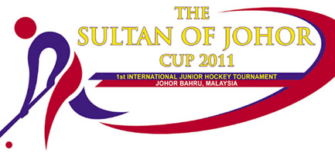New Indian Express: Azlan Shah Cup: Cup of Good Hope
Share
New Indian Express: Azlan Shah Cup: Cup of Good Hope
By Swaroop Swaminathan
“Australia is the best team in the world,” India coach Roelant Oltmans had observed after his team’s 6-1 win over Malaysia in their last group encounter on Friday. “There is no doubt about that,” he had said.
And the Australians showed why they are regarded as the best, as they constructed a classy 4-0 win over Oltmans’ boys in the final of the Sultan Azlan Shah Cup here on Saturday. If the Kookaburras’ 5-1 win over India in the group stage was misleading, this was more accurate.
The Australian defence and midfield did take their time to get into the game — the first goal didn’t arrive till three minutes before the end of the first half — but they remained patient and did not allow Sardar Singh’s men any cheap openings. Cul-de-sacs were created all over the pitch, the Indian midfield were asphyxiated out of the encounter and you sensed the match was dead as soon as Australia scored the second goal.
If Thomas Craig had given the nine-time Azlan Shah winners a seemingly unassailable lead, striker Matt Gohdes added gloss with two more goals, with his second a barely believable finish. He got the ball down, turned and finished to draw gasps from the crowd. More obtuse the angle, more acute India’s problems.
But the Indian loss — quite predictable — shouldn’t lead to any hand wringing. Australia are a team who remove their goalkeeper with a substantial part of the match remaining to test their defence (they did it against Canada). Australia have a captain who delivers an ‘I’m not happy’ speech at post-match press conferences because his team just won 3-1.Even otherwise, this tournament has largely been a success for Oltmans.
And he gets a massive tick for his team selection. He had made a huge statement by resting a few senior players. Indian teams, in the past, have gone to second-tier competitions with full-strength squads. That strategy prevents youngsters from getting sufficient game time in high pressure situations. It also prevents the coach from seeing how reliable a back-up or a back-ups back-up can be when he is thrust into the spotlight.
But the Dutch manager had seen enough, and rested lead goalkeeper PR Sreejesh, starting forward Akashdeep Singh and regular drag-flicker VR Raghunath, among a few others. He was also brave to name a young side — all 18 players were under 30, and the average age of the side was 23.5 years. The best of the Olympic-bound teams by a considerable distance (Australia 26.33, Canada 26.66, New Zealand 26.16). And the young nature of the side formed the crux of Sardar Singh’s post-match analysis on how the tournament went from an Indian perspective.
“The young guys have put up a good show, and this’ll benefit Indian hockey in the long run,” the skipper said.
“We put up a gritty show in the final, but small mistakes in our circle cost us.”
Mistakes they were, but Oltmans has learned a fair bit about his team — Harjot Singh, Sreejesh’s immediate deputy — isn’t reliable, Harmanpreet can become the country’s main penalty corner specialist, and the side is capable of scoring goals while holding their own at the back.
Not many tests remain between now and Rio — the Champions Trophy in England in June is India’s only major assignment in the interim — and the former Pakistan coach needs all the feedback he can get before making a final decision.


